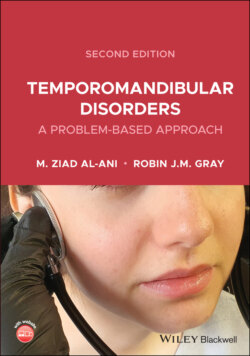Читать книгу Temporomandibular Disorders - Robin J. M. Gray - Страница 76
Centric occlusion and centric jaw relation
ОглавлениеIt is important to determine whether centric occlusion (the habitual bite) coincides with centric jaw relation (the patient's relaxed mandibular position). If these two jaw positions do not coincide (Figure 3.13), it is important to determine where the premature occlusal contact occurs at first tooth contact and what is the direction of the slide from the initial centric relation contact to the patient's habitual bite. If there is premature contact and a small slide from centric relation to centric occlusion, and if in the same sagittal plane, this is not thought to be as clinically significant as a marked lateral slide. The direction and magnitude of the slide are therefore important.
Figure 3.13 The difference between (a) centric relation and (b) centric occlusion
(From Gray RJ, Davies SJ, Quayle AA. A clinical approach to temporomandibular disorders. 4. Examination of the articulatory system: the Occlusion. Br Dent J 1994;177:63–68.)
Manipulation of the mandible to centric relation is a difficult technique to master because only very gentle pressure should be applied (Figure 3.14).
Figure 3.14 (a) Centric relation (CR) recording; (b) premature contact in CR. (c) Slide from CR to centric occlusion observed and recorded.
(M. Ziad Al‐Ani, Robin J.M. Gray.)
The objective is not for the clinician to override the patient's muscle force with his or her own. If manipulation to centric jaw relation is difficult, it is sometimes useful to put a small amount of softened green‐stick compound between the upper and lower incisor teeth and help the patient to gently tap into this. This often relaxes the muscles to a degree whereby passive manipulation of the mandible can be achieved. When performing this manoeuvre, it is useful to use thin articulating paper (Baush Occlusion Paper 40 μm) supported in paper holding forceps (Figure 3.15).
Figure 3.15 Paper‐holding forceps: blue for static occlusion; red for dynamic movements.
(M. Ziad Al‐Ani, Robin J.M. Gray.)
The first tooth contact is recorded using the articulating paper and the patient is then requested to squeeze the teeth together and any slide from centric jaw relation to centric occlusion is observed and recorded.
